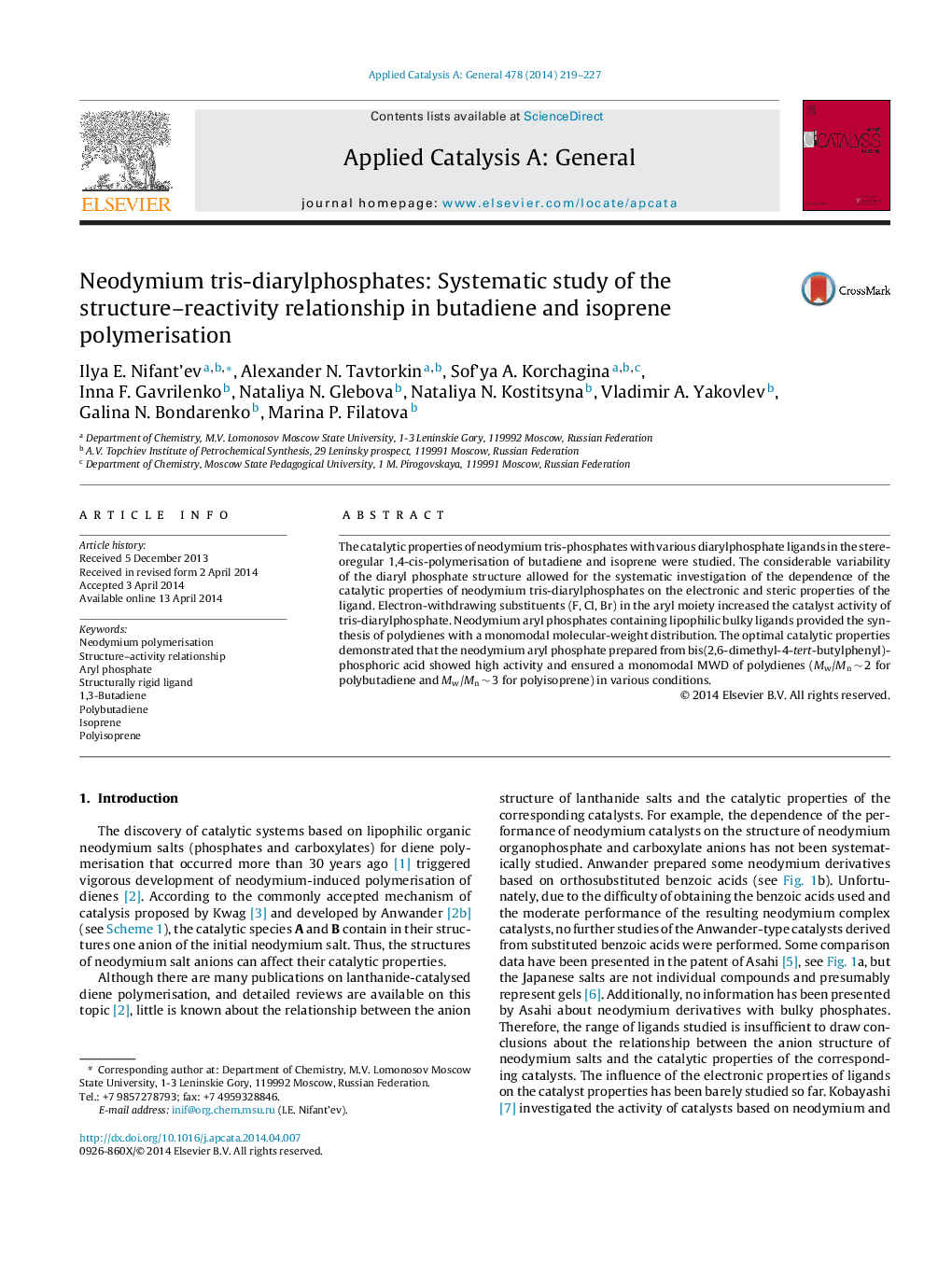| Article ID | Journal | Published Year | Pages | File Type |
|---|---|---|---|---|
| 39691 | Applied Catalysis A: General | 2014 | 9 Pages |
•Structure–activity relationship in neodymium-catalysed polymerisation of dienes.•Synthesis of tris-aryl phosphates of neodymium was elaborated.•A number of tris-aryl phosphates of neodymium were obtained.•The optimal neodymium tris-aryl phosphate catalyst was identified.
The catalytic properties of neodymium tris-phosphates with various diarylphosphate ligands in the stereoregular 1,4-cis-polymerisation of butadiene and isoprene were studied. The considerable variability of the diaryl phosphate structure allowed for the systematic investigation of the dependence of the catalytic properties of neodymium tris-diarylphosphates on the electronic and steric properties of the ligand. Electron-withdrawing substituents (F, Cl, Br) in the aryl moiety increased the catalyst activity of tris-diarylphosphate. Neodymium aryl phosphates containing lipophilic bulky ligands provided the synthesis of polydienes with a monomodal molecular-weight distribution. The optimal catalytic properties demonstrated that the neodymium aryl phosphate prepared from bis(2,6-dimethyl-4-tert-butylphenyl)-phosphoric acid showed high activity and ensured a monomodal MWD of polydienes (Mw/Mn ∼ 2 for polybutadiene and Mw/Mn ∼ 3 for polyisoprene) in various conditions.
Graphical abstractFigure optionsDownload full-size imageDownload high-quality image (142 K)Download as PowerPoint slide
